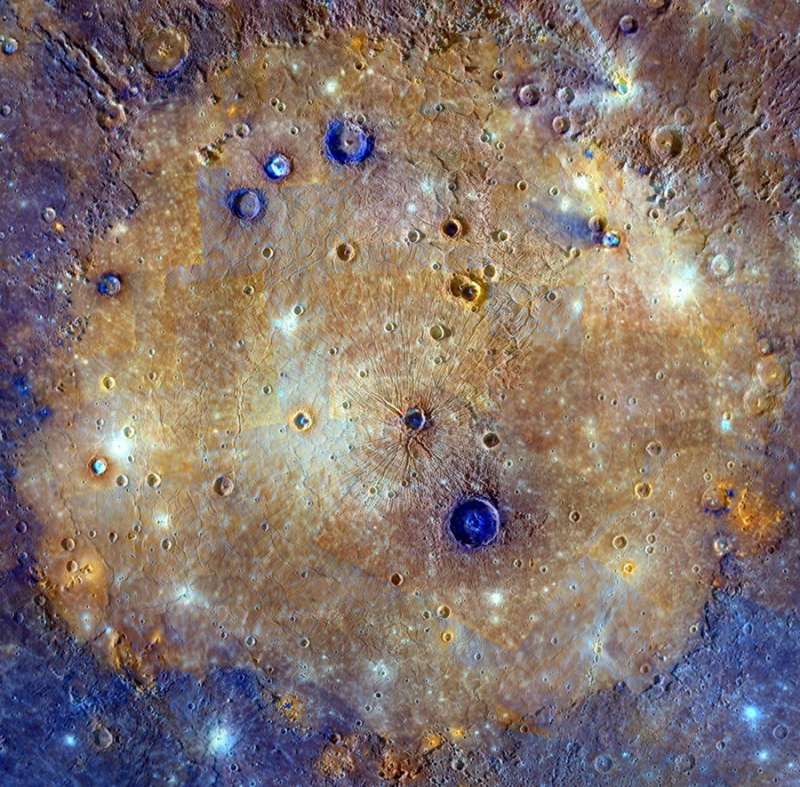Credit & Copyright: NASA,
Johns Hopkins Univ. APL,
Arizona State U., CIW
Explanation:
The sprawling Caloris basin
on Mercury
is one of the solar system's largest
impact basins,
created during the early history of the solar system by the impact of
a large asteroid-sized body.
The multi-featured,
fractured basin spans about 1,500 kilometers in this
enhanced
color mosaic based on image data from the Mercury-orbiting
MESSENGER spacecraft.
Mercury's youngest large impact basin,
Caloris was subsequently filled
in by lavas that appear orange in the mosaic.
Craters made after the flooding
have excavated material from beneath the surface lavas.
Seen as contrasting blue hues, they likely offer a glimpse of
the original basin floor material.
Analysis of these craters suggests the thickness
of the covering volcanic lava to be 2.5-3.5 kilometers.
Orange splotches around the basin's perimeter are thought to be
volcanic vents.
1999 2000 2001 2002 2003 2004 2005 2006 2007 2008 2009 2010 2011 2012 2013 2014 2015 2016 2017 2018 2019 2020 2021 2022 2023 2024 2025 |
Yanvar' Fevral' Mart Aprel' Mai Iyun' Iyul' Avgust Sentyabr' Oktyabr' Noyabr' Dekabr' |
NASA Web Site Statements, Warnings, and Disclaimers
NASA Official: Jay Norris. Specific rights apply.
A service of: LHEA at NASA / GSFC
& Michigan Tech. U.
|
Publikacii s klyuchevymi slovami:
Merkurii - udarnyi krater
Publikacii so slovami: Merkurii - udarnyi krater | |
Sm. takzhe:
Vse publikacii na tu zhe temu >> | |
